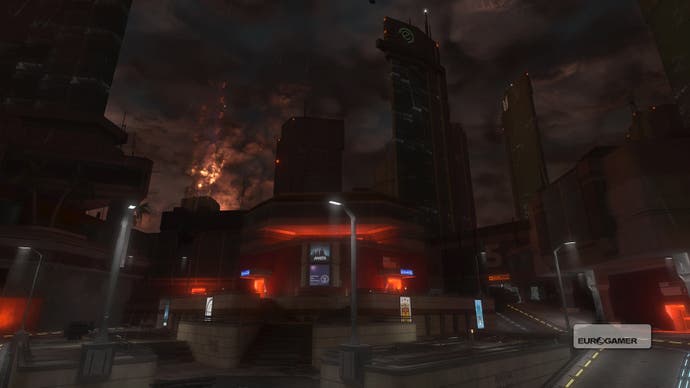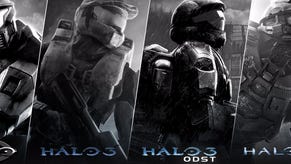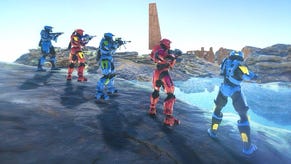E3: Halo 3: ODST
Drop-shocking feats.
Bungie is describing ODST as a mystery, which sounds promising, and there are clear overtones of film noir, but you won't be walking the mean streets of New Mombassa entirely alone, as the enigmatic Superintendent is there beside you. An automating city-management computer, he's been watching your moves and wants to help, giving you a handy 3D map of the area with specific locations marked for you to investigate, and offering guidance whenever possible via New Mombassa's own video-screens.
In the early stages of the game such screens simply show you the way to your next objective and offer fairly comic pep talk, but it's exciting to imagine what a company like Bungie could do with such an unexpected companion, hopefully busting him out of the role of mere plot device and making him a crucial part of the story itself.
Whatever happens, it's probably a good thing that he's there, as a big part of the latest Halo is about reminding you that you aren't Master Chief anymore, and showing you what it's like to feel vulnerable. Not only is Rookie alone, but ODST can't jump as high or run as fast as the Spartans, and they don't have movement sensors, so you'll have to pick and choose your encounters rather than wading into every fight confident that you're a world-beater.
Bungie's even tweaked its famous health system once again to drive the point home, bringing back medipaks in the form of the city's health stations, and returning to something akin to the original Halo game's approach, with a small amount of rechargeable 'stamina' on top of a longer health bar which has to be replenished manually. On the plus side, however, new VISR display allows you a kind of night vision, while also differentiating enemy units from friends, and there are two ODST-specific weapons to screw around with: a silenced pistol, which can take off a grunt's head in one shot, even if it sounds like you're firing staples, and a silenced SMG.

The campaign is only half of any Halo, of course, and Bungie's also revealed a multiplayer mode called Firefight. Akin to Gears 2's Horde, it's a wave-based survival co-op game, supporting up to four players online or using System Link. Enemies attack in randomised rounds which build in intensity, and complication comes from the skulls system - different combinations of skulls becoming active as the game continues, inflicting a number of punishing conditions on you: maybe boosting the Covenant's health or improving their weapons, say, until, if you can last long enough, all of the skulls are in effect at once and the game becomes an exercise in high-score sadism.
With Bungie as control freakish as ever, the sequence the skulls fire in is fixed each time you play, but the developers are confident they've nailed the perfect arrangement, and given their commitment to playtesting, it's probably safe to let them have the benefit of the doubt. Playing Firefight on the show floor certainly reveals a meaty and highly challenging co-op game, in which teamwork - and often sticking fairly close together - is utterly essential for survival.
Taken as a whole, ODST is a fascinating prospect: sections of it suggest that it's business as normal, but other parts of it, where you're cut off from everybody and trading ballistic adventures for a purer form of urban exploration, hint at an entirely new side to such a well-travelled series. Lithe and mysterious where some found previous Halos to be a little bit windy, you've gone from galactic superhero to new boy, but that's unlikely to be the cause of too much disappointment.
Halo 3: ODST is due out for Xbox 360 on 22nd September.
















